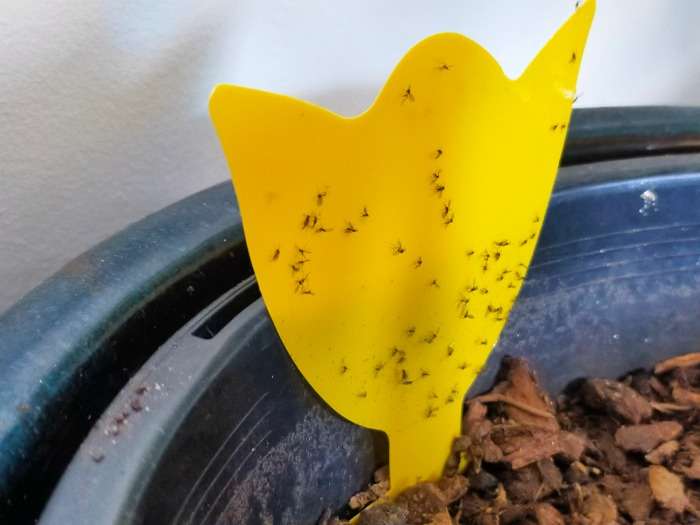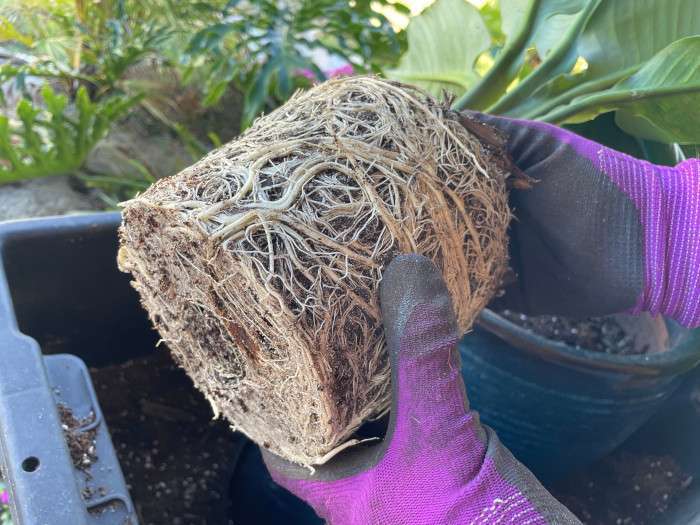If your indoor plants are struggling—yellowing leaves, weak roots, or constant overwatering issues—the problem might be your soil. A chunky mix can improve drainage, aeration, and root health, helping your plants thrive instead of just survive.
I’ve been testing different chunky mixes for my indoor plants, and the results have been great. After some trial and error, I’ve found a blend that really works. Today, I want to share my DIY chunky mix and why it makes such a difference.
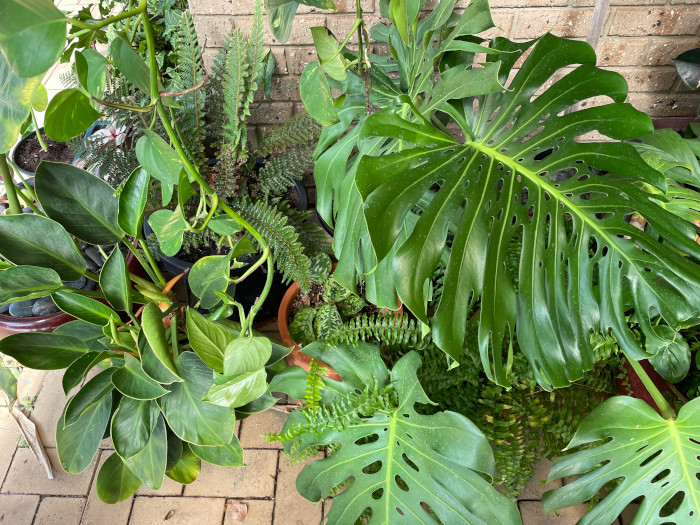
What is Aroid Soil Mix?
Many aroids, like Philodendrons and Monsteras, are epiphytic or semi-epiphytic, meaning they naturally grow on trees or in loose, organic material rather than dense soil. If their roots sit in heavy, compact soil for too long, things start to go wrong—slow growth, yellowing leaves, and, eventually, rot.
A chunky potting mix helps:
- Prevent Root Rot – Excess water drains quickly, reducing the risk of soggy roots and fungal problems.
- Improve Oxygen Flow – The larger materials create air pockets, giving the roots access to more oxygen.
- Support Healthy Growth – In a loose mix, roots can expand easily, absorb nutrients effectively, and grow stronger.
And it’s not just aroids that like this kind of mix. Plenty of other indoor plants do well in it too. If you want to experiment, you can try using an aroid potting mix for your other plants—just keep in mind that you might need to water a little more often than you’re used to.
With a chunky mix, I usually water about once a week, but I always check the soil first. That matters more than the keeping to a schedule.
Note: A chunky mix will often be way lighter than you are used to, so picking up your plants becomes a lot easier.
Ingredients I Use in a Chunky Aroid Mix
There are actually a lot of different ingredients you can use in a chunky mix. Here are the ones I prefer:
Coco Chips/Mulch
Coco chips or coco mulch are the main ingredients that add texture and “chunk” to my chunky mix. Made from coconut husks, they’re a more eco-friendly choice compared to some other materials.
Despite their large and chunky size, coco chips hold moisture quite well. This is crucial, as a chunky mix typically doesn’t have heavy water-retaining ingredients like compost or soil.

Tip: Rinse your coco mulch or chips before use to help remove any excess salts.
Coco Coir
Coco coir is finer than the chips or mulch and holds moisture better, making it a great addition to a chunky mix. While it retains more water, it still allows for good drainage, preventing the mix from becoming too soggy.
You can use more coco coir in the mix if you want to water less frequently or are thinking about using the mix for something like ferns which like more consistent moisture than most other plants.

Perlite
Perlite is a common ingredient in any well-draining potting soil. It’s lightweight and highly porous, making it excellent for creating air pockets in your soil mix and lightening the overall texture. This helps improve drainage and provides much-needed aeration for plant roots.

Note: When using dry perlite, be careful of its dust. It’s a good idea to wear a mask to avoid breathing in fine particles.
Chunky Potting Mix
I like to use a small amount of a cheap potting mix just to add some nutrients, since most of the other ingredients in a chunky or aroid mix don’t provide many. The potting mix I use tends to be a bit chunkier and less fine, which works well for our chunky mix.
You can skip this if you want a completely soilless mix, but remember your plant needs to be fertilized to get the nutrients it needs.
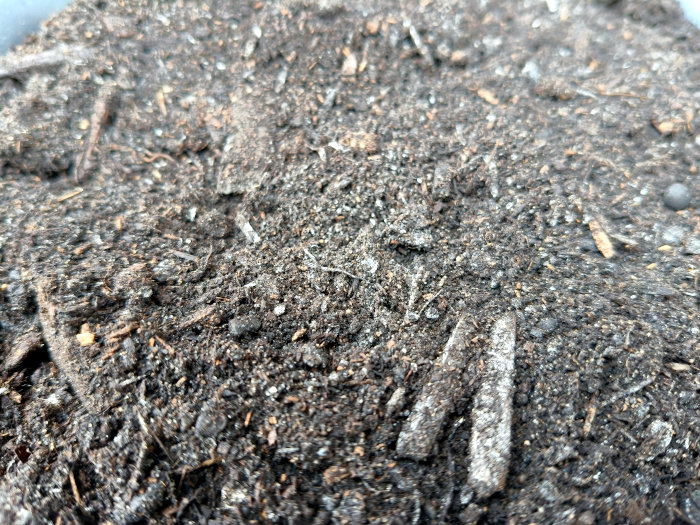
Other Options for a Chunky Aroid Mix
- Peat Moss/Sphagnum Moss: Great for moisture retention but can be expensive and less sustainable.
- Bark: Adds aeration and structure, but can be pricier.
- Charcoal: Enhances chunkiness and aeration, but can also be expensive.
- Sand: Improves drainage for a fast-draining, lightweight mix.
My Chunky Aroid Mix Recipe
These numbers are just a guide—I often eyeball the mix. The key is to make sure the majority of your mix is made up of the chunkier components (coco chips, bark, etc.) to promote good aeration and drainage.
- 60% Coco chips/bark
- 20% Coir
- 10% Perlite
- 10% Potting mix
Tip: This mix drains quickly, so watering over a sink or tray can be helpful to prevent spills.
How to Make Aroid Potting Mix
The main thing is to mix the materials together evenly. That said, here are the steps I use:
- Rehydrate the Coir: You’ll need a container to rehydrate your coir. Follow the instructions on the package to fully hydrate it before using.
- Start with the Base: Begin by adding coco mulch/chips as the base of your mix.
- Add Coir: Mix in the rehydrated coir to the coco mulch.
- Add Perlite and Potting Mix: Next, add the perlite and a little bit of potting mix.
- Mix Thoroughly: Stir everything together, making sure the bottom layer is mixed well with the top.
- Check the Texture: You should be left with a very chunky, well-aerated mix that’s perfect for your aroids.
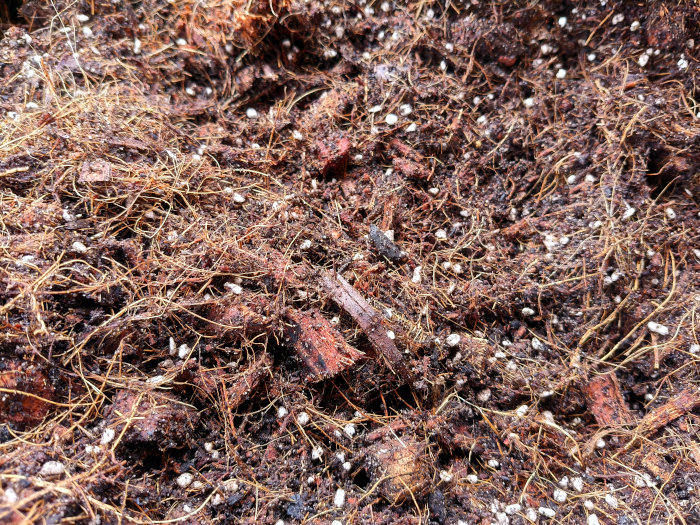
Tip: Make your mixes in bulk and pot up a bunch of plants at once. It’s less work overall and means only one mess to clean up.
Conclusion
Chunky mixes are great for creating a free-draining potting mix that works well for aroids and many other indoor plants. The main thing is making sure half of the mix is made up of larger, chunky particles, but the ingredients are really up to you.
Give my materials and ratios a try and see if it works out for you. I find the chunky materials not only make my mixes better-draining but also look pretty good too.
